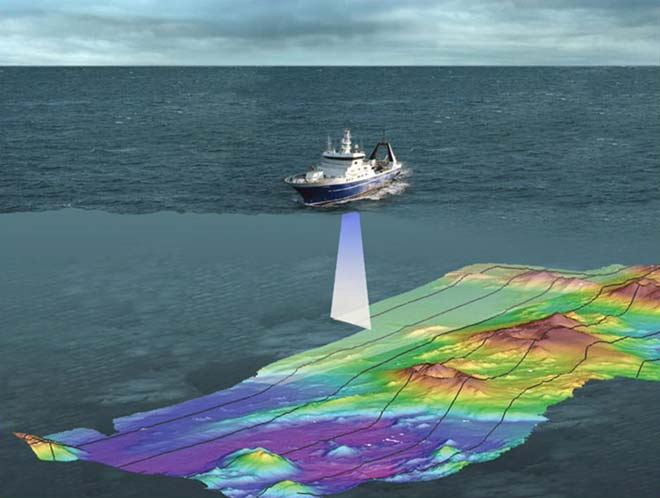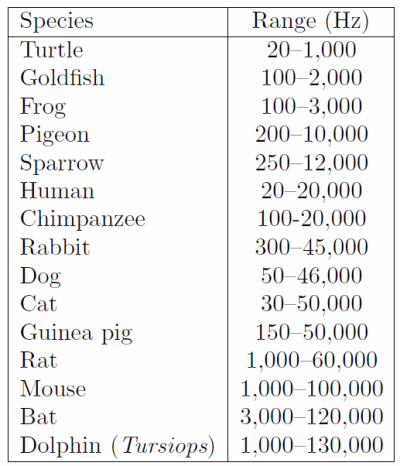
Ships have mastered the technique of seafloor mapping using Sonar.
https://schmidtocean.org/cruise-log-post/mapping-earths-ocean-seafloor/

A comparison of the audible ranges of various species.
http://beforeitsnews.com/health/2011/03/the-human-hearing-range-464937.html

A comparison of the audible ranges of various species.
http://beforeitsnews.com/health/2011/03/the-human-hearing-range-464937.html
Sonar stands for Sound Navigation and Ranging. It uses sound waves to visualize areas that cannot be seen easily, such as dark caves or underwater. It has been used internationally to map approximately 10% of the ocean floors. Although it is useful, it is not the most efficient way to map the sea. The range for Sonar tends to be very low and give data with low resolution. This can lead to problems translating the data.
Types of Sonar
There are two types of Sonar: Active and Passive.
Active Sonar is used for mapping and visualization, where Passive Sonar only refers to listening. Passive Sonar can be used to pick up other Sonar signals, while keeping your location a mystery. Active Sonar emits sound wave pulses that can travel much farther in water than light waves can. The frequencies of the sound waves can vary, however, use of certain frequencies in the ocean can negatively impact marine animals that have developed their own Sonar abilities.
Different Frequencies
Different species are capable of hearing different frequencies of sound. The audible range for human hearing is quite small compared to some animals.
The approximate audible range for humans is from 20-20k Hertz, where the audible range for bats can be from 3-120k Hertz. This means that the human brain can only process a small fraction of the various chirps from bats. It can also be noted that dolphins have an even larger audible range than bats; 1-130k Hertz!
Contents
Title
Sonar and Frequency (Current)
Echolocation
Other Species Using Sonar Techniques
Human Adaptions
Bibliography
Sonar and Frequency (Current)
Echolocation
Other Species Using Sonar Techniques
Human Adaptions
Bibliography